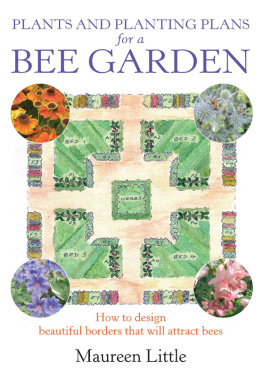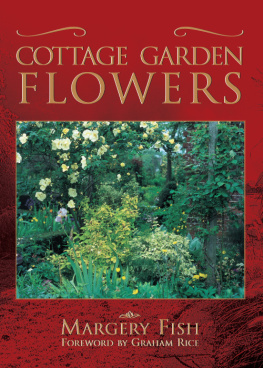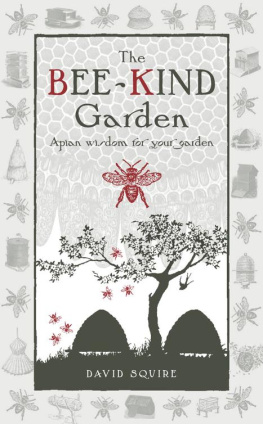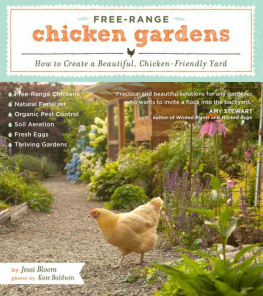PLANTS AND
PLANTING PLANS
for a
BEE GARDEN
Contents
Assessing the Conditions in Your Garden
Designing with Plants
Bee Specifics
The Plans
Plant Families and Species used in this Book
Table of Bee-friendly Plants
Further Reading

Published by How To Books Ltd
Spring Hill House, Spring Hill Road,
Begbroke, Oxford OX5 1RX, United Kingdom
Tel: (01865) 375794. Fax: (01865) 379162
www.howtobooks.co.uk
All rights reserved. No part of this work may be reproduced or stored in an information retrieval system (other than for the purposes of review), without the express permission of the Publisher given in writing.
The right of Maureen Little to be identified as author of this work has been asserted by her in accordance with the Copyright, Designs and Patents Act 1988.
Maureen Little 2012
British Library Cataloguing in Publication Data A catalogue record for this book is available from the British Library
ISBN: 978-1-78102-185-9 (mobi); 978-1-84803-749-6 (e-pub)
Cover design and e-book creation by
www.mousematdesign.com
NOTE: The material contained in this book is set out in good faith for general guidance and no liability can be accepted for loss or expense incurred as a result of relying in particular circumstances on statements made in this book. Laws and regulations are complex and liable to change, and readers should check the current position with the relevant authorities before making personal arrangements.
Acknowledgements
Generous relatives, friends and colleagues have encouraged and inspired me to write this book. I am indebted to all of them (and any mistakes you may find are entirely mine):
My friend and bee mentor, Toady, who introduced me to his beloved bees. He and they will always have a particular place in my life. Giles Lewis and Nikki Read of Spring Hill Publishing I always marvel at their faith in me.
And, most importantly, my family Georg, Becca and James (and, of course, Susie). How could the garden of my life be so well designed and full of beautiful flowers, if not for them?
I would also like to say thank you to Tricia Brown of the Garden Studio, who enables me to keep my hand in often in the soil, literally! and who allowed me to take photographs of her plants; and to John Everiss of Bezza Nurseries, who allowed me to take photographs of his superb RHS Gold Medal garden, some of which are included in this book.
Introduction
Have nothing in your house
that you do not know to be useful
or believe to be beautiful.
This was the advice of William Morris, the influential craftsman, writer and social reformer of the 19th century, who is probably best remembered nowadays for his organic, garden-inspired designs for interior furnishing. You may wonder why I have chosen this quotation about interior design to begin a book about garden design and, more specifically, about plants and planting plans for a bee garden. Well, lets adjust the quotation slightly, so that it reads:
Have no plant in your garden
that you do not know to be useful to bees
or believe to be beautiful.
This now captures the essence, I think, of what I am trying to achieve here.
It probably goes without saying but I make no apology for saying it again that bees are vital to our planets ecology and economy, and to our own well-being. The bad news is that without the pollinating services of bees of all kinds, our food supply would be severely compromised. The good news is that we can all do something to help. If each of us grew just a handful of bee-friendly plants in our gardens, this would provide an enormous resource for our buzzy friends in fact, the phrase Think globally, act locally could have been invented for bee-friendly gardeners!
So, what I would like to see in every garden are plants and flowers which are helpful to bees and which, at the same time, we find beautiful to look at.
It is, of course, the plants in a garden that are of paramount importance if we want to design a garden for bees. Many people think that in order to provide a suitable habitat for bees they have to plant a wild flower meadow or allow their garden to go native, eschewing their beloved garden plants. Certainly, bees adore wild and native flowers, but they also delight in a whole range of cultivated garden plants that are readily available at garden centres and nurseries.
Flowers provide bees with the food they need to survive, so this book will deal predominantly with questions like which plants are best for bees, and how we can arrange them together in suitable groupings that are attractive to bees as well as aesthetically pleasing to us. The plants that I have selected are just that a selection and are by no means the only ones that support bees. My choice of plants is subjective: I have chosen plants that are, from my experience and research, good for bees; but they are also ones that I personally like. I hope you will like my choice, too.
I have provided a range of garden plans later in the book. Rather than whole garden designs, with their accompanying hard landscaping and other features, you will find planting plans for different situations and of varying styles. I hope that you will be inspired enough by some of these planting ideas to try to transfer them to your own garden. You may find, of course, that you need to adapt the plans to suit your space; they are certainly not meant to be prescriptive, but to be ideas that aim to help you create your own bee border. One whole garden design is included, however, which brings together some of the planting plans. This garden is a real one, and is, in fact, owned by a beekeeper.
You will notice that throughout the book I refer mostly (but not exclusively) to honeybees. There are two reasons for this. First, I help my friend, and bee mentor, Toady, look after his honeybees, so they have a special place in my heart. Second, and perhaps more importantly for this book, is that generally speaking, what is suitable in the way of flowers for honeybees is bound to be acceptable to both bumblebees and solitary bees, and indeed many other pollinating insects. (This is to do with the length of the bees proboscis, which is generally shorter in honeybees than in other bees, so if a honeybee can reach the nectar, then other bees will be able to do so too.)
The first thing we will do in this book is assess the conditions in your garden things like aspect and soil that will affect how well (or otherwise) your plants will grow.
In we give some thought to design tools and how we can use them to create an attractive border. I also suggest a useful method of how we can arrange plants into groups, which will help us choose which ones to put together to make a good planting plan.
In we look at bee-specific things. We begin by examining very briefly some general factors that can make our garden as a whole more beefriendly: things like providing water and suitable habitats for bumblebees and solitary bees and, if you wish to keep honeybees for yourself, appropriate locations for beehives. We then focus on what makes a plant bee-friendly, and lastly look at which particular plant families are attractive to bees.












